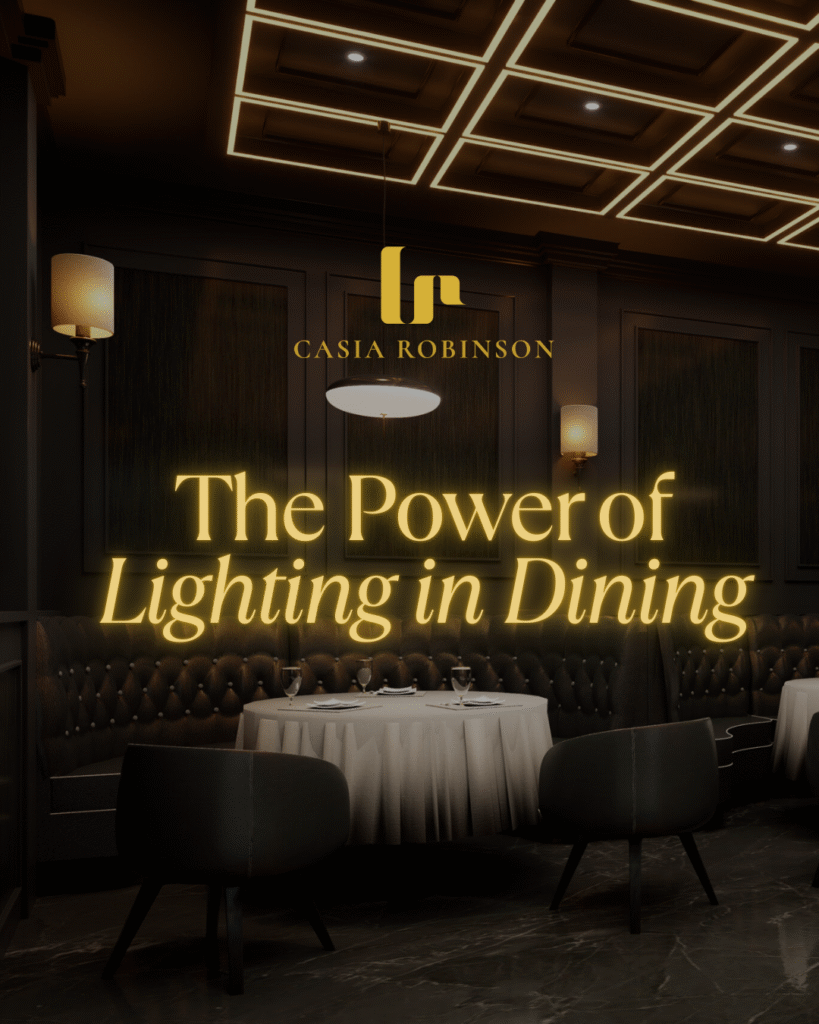Walk into a restaurant and notice how you feel before you even taste the food. Chances are, the lighting had a lot to do with it. Bright and airy, dim and romantic, or lively and energetic; lighting shapes how we experience a space just as much as furniture, décor, and the menu itself.
At its core, lighting is about more than function. Yes, we need to see our food, but the right setup can transform a simple meal into an experience worth remembering.
Setting the Mood
Think of lighting as the soundtrack of a dining space. Soft, warm glows create intimacy and relaxation, encouraging people to stay a little longer. On the other hand, brighter, cooler light keeps things moving perfect for cafés or quick-service spots. That’s why a candlelit dinner feels different from brunch under natural light.
Making Food Look Its Best
Food presentation isn’t just about plating. Lighting can make dishes look vibrant and appetising, or flat and unappealing. Warm, balanced tones bring out the richness of colours like golden crusts, deep reds, and fresh greens while harsh overhead lights can wash everything out. When food looks good, it feels more enjoyable before the first bite.
Guiding the Eye
A well-lit table naturally draws focus. Spotlights over dining areas create intimacy even in a large room, while accent lights highlight textures, wall finishes, or artwork. The best spaces use layers of light—ambient, task, and accent—to create depth and interest. Its design works quietly in the background, shaping how guests experience the room.
Encouraging Connection
Lighting also sets the tone for conversation. Softer light encourages a slower pace, relaxed voices, and a sense of ease. Brighter spaces feel livelier and more energetic, better for groups and gatherings. It’s subtle, but it influences how we connect with the people across the table.
Comfort Matters Too
Design isn’t just about atmosphere it’s also about practicality. Guests should be able to read a menu and enjoy their food without straining, and staff need enough light to work efficiently. Striking the right balance ensures the space feels comfortable and functional without losing its style.
Tips for Better Dining Lighting
- Layer ambient, task, and accent lighting for flexibility.
- Install dimmers to adjust the mood from day to night.
- Choose warm bulbs (2700K–3000K) for a welcoming glow.
- Highlight the dining table to make food the centrepiece.
- Avoid glare and harsh shadows with thoughtful fixture placement.
- Use natural light when possible, softening it with evening lighting.
Lighting is never just about illumination; it’s about atmosphere, presentation, and how people feel in a space. The right design can make food look irresistible, encourage guests to linger, and create the perfect tone for every occasion.
At Casia Robinson Studio, we design lighting as an integral part of every restaurant, café, or home dining project. Because when lighting is done well, it doesn’t just brighten a space it elevates the whole dining experience.



